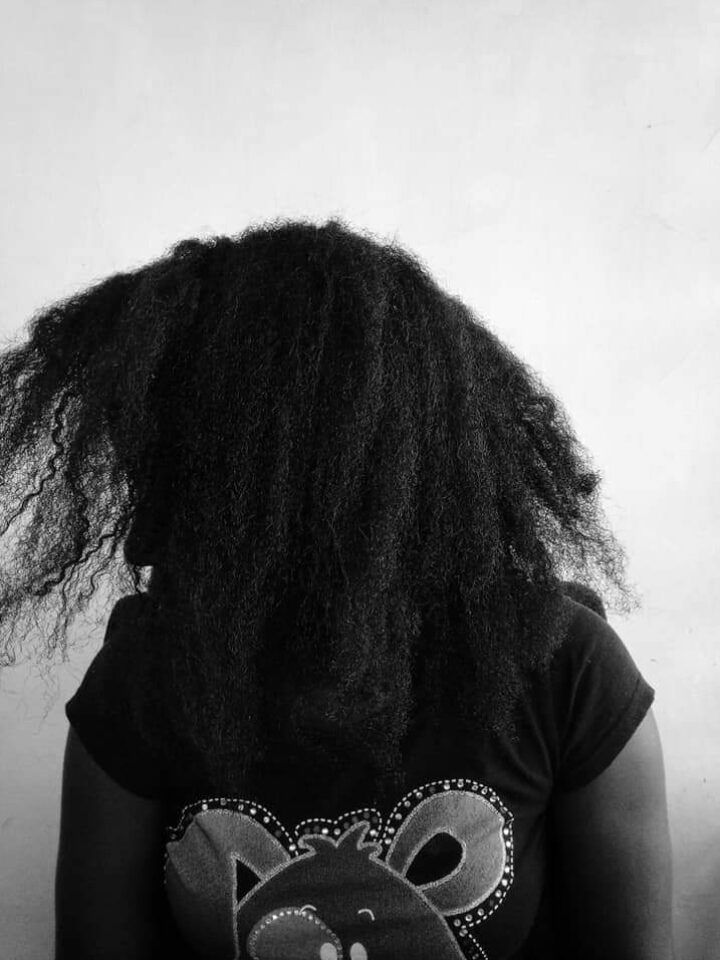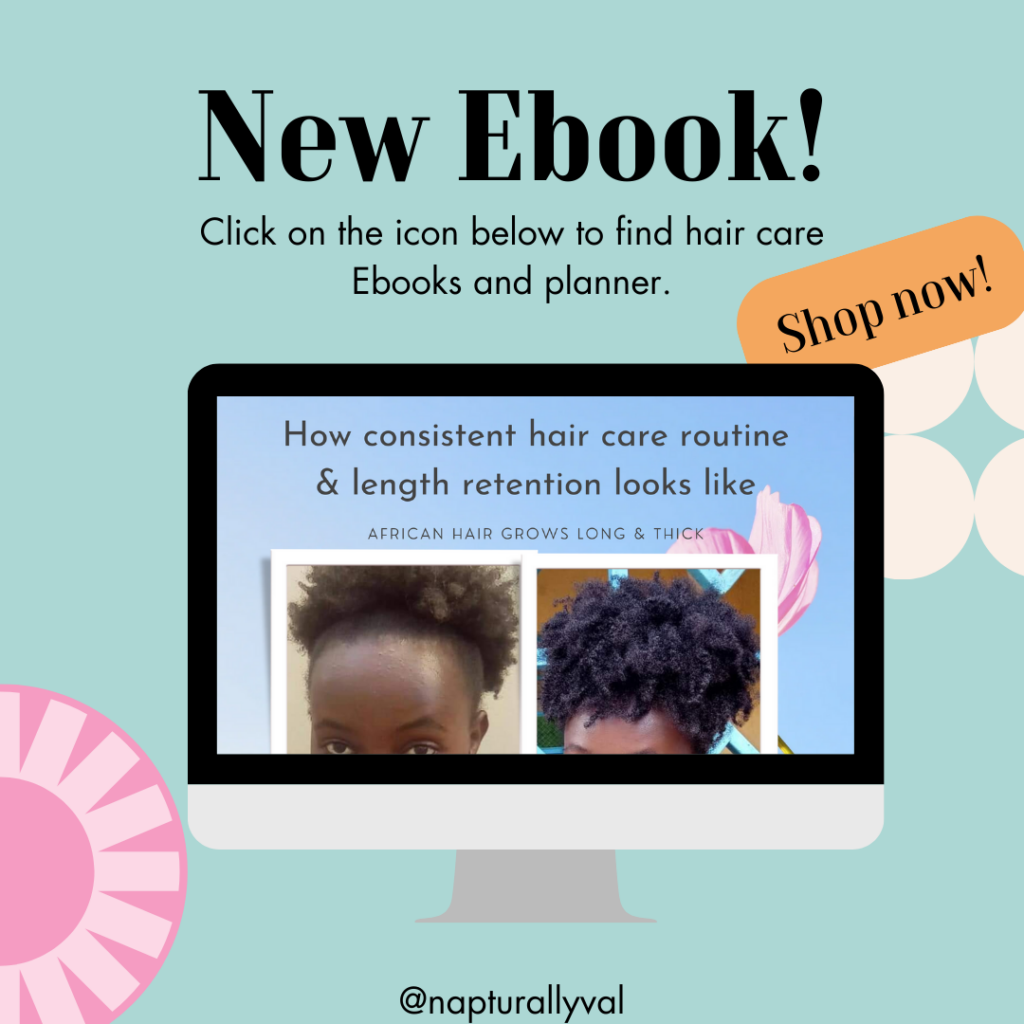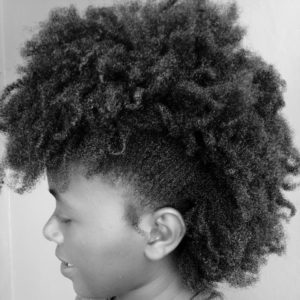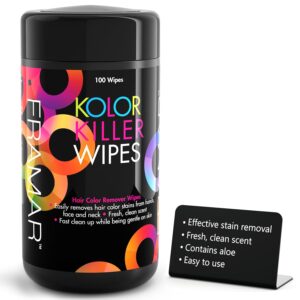Hey curl friends! Let’s talk about something every naturalista experiences at some point: shedding. Seeing hair in the sink, on your comb, the floor or on your pillow can be worrying, but here’s the thing—shedding is natural! In fact, it’s completely normal to lose 50–100 hairs per day.
However, excessive shedding? That’s another story. It can be frustrating and concerning, but don’t worry I’m here to guide you on how to tackle shedding and maintain a healthy, full head of hair. Hold up a minute, first learn the difference between hair shedding and hair breakage.
Ready to grow the hair of your dreams? Our Hair Growth & Hair Care eBooks and Hair Planner are the ultimate tools to transform your routine! Learn proven tips to boost growth, build the perfect regimen, and track every step of your journey. Say goodbye to trial and error—this is your guide to healthy, thriving hair. Grab yours here now and start your glow-up today!

Table of Contents
What Is Shedding, and How Much Shedding is Okay?
Shedding occurs when hair naturally falls out of the follicle as part of the growth cycle. Here’s a quick science lesson on your hair’s lifecycle:
- Anagen (Growth Phase): Hair actively grows from the follicle.
- Catagen (Transition Phase): Growth slows down, and the hair follicle shrinks.
- Telogen (Resting Phase): The hair stops growing and eventually falls out.
To learn more about the growth cycle and the science of natural hair and hair grab this book for details. It really helped with my natural hair care and growth as a beginner. Most shedding happens during the telogen phase, and it’s perfectly normal. However, if you notice an unusual amount of hair loss, it could be due to factors like:
- Excessive Manipulation: Overstyling or rough detangling.
- Nutritional Deficiencies: Lack of essential vitamins and minerals.
- Stress: Yes, stress can wreak havoc on your hair!
- Hormonal Changes: Pregnancy, postpartum, or menopause.
- Improper Hair Care Practices: Neglecting moisture or using harsh products.

4C Hair Shedding? 10 Proven Ways to Reduce Hair Loss Naturally
Now that you know the basics, let’s look at how to minimize shedding.
1. Detangle Gently
One of the most common causes of excessive shedding is rough handling during detangling. Our natural hair, especially 4C textures, thrives when treated gently.
How to Detangle Without Causing Shedding:
- Use a wide-tooth comb or your fingers to detangle.
- Work in small sections for easier detangling and to avoid tangling.
- Always detangle on damp or wet hair with a conditioner or detangler that has good slip, like the Creme of Nature, Knot Away Leave in Detangler
Pro Tip:
Start detangling from the ends and work your way up to the roots to minimize breakage and shedding.
2. Keep Your Hair Moisturized
Dry hair is brittle hair, and brittle hair is more prone to breakage and shedding. Keeping your strands hydrated is a must for reducing shedding.
How to Maintain Moisture:
- Use a water-based leave-in conditioner, such as the OKAY Black Jamaican Castor Oil Moisture Growth Leave In Conditioner
- Follow the LOC (Liquid, Oil, Cream) or LCO method to lock in moisture.
- Deep condition regularly with a product like Design Essentials Natural Almond & Avocado Wash Day Deep Moisture Masque to restore hydration.
3. Protect Your Ends
Your ends are the oldest and most vulnerable part of your hair. If they’re neglected, they can become dry, split, and lead to unnecessary shedding.
How to Protect Your Ends:
- Trim regularly: Get rid of split ends every 6–8 weeks.
- Tuck them away: Use protective styles like buns, braids, or twists to shield your ends from damage.
- Seal them in: Use heavier oils like castor oil to keep your ends hydrated.
Related post: how to keep your ends healthy and flourishing.
4. Avoid Over-Manipulation
The more you manipulate your hair, the more you risk unnecessary shedding. Overstyling, frequent combing, and daily twists can weaken your strands.
How to Minimize Manipulation:
- Opt for low-manipulation styles like chunky twists, flat twists, or buns.
- Extend protective styles for 2–4 weeks, but don’t neglect your hair underneath.
- Avoid constantly switching hairstyles.
Related post: all things you should know about caring for protective styles.
5. Keep Your Scalp Healthy
A healthy scalp is the foundation for healthy hair. Build-up, dandruff, and clogged follicles can stunt growth and cause shedding.
How to Care for Your Scalp:
- Cleanse your scalp regularly with a gentle shampoo, such as Okay black jamaican castor oil moisture growth shampoo.
- Massage your scalp with growth stimulating oils and scalp healing oils like peppermint or tea tree oil to promote circulation.
- Avoid heavy product build-up by using a clarifying shampoo once a month.
Pro Tip:
Incorporate scalp massages into your routine. Use a scalp massager like the Heeta Scalp Care Hair Brush to stimulate blood flow and promote hair growth.

6. Maintain a Balanced Diet
Your hair is a reflection of what you put into your body. Nutritional deficiencies can lead to weak strands and excessive shedding.
Hair-Friendly Foods:
- Protein: Eggs, chicken, fish, and beans to strengthen your strands.
- Iron: Leafy greens, lentils, and red meat to prevent hair thinning.
- Omega-3 Fatty Acids: Salmon, walnuts, and chia seeds for scalp health.
- Biotin: Nuts, eggs, and avocados for stronger hair.
Pro Tip:
Consider supplements like SugarBearHair Vitamins if you struggle to get all your nutrients through diet.
7. Use Protective Styles Wisely
Protective styles can minimize manipulation and shield your hair from damage, but they must be done correctly.
How to Rock Protective Styles Safely:
- Avoid tight braids or styles that pull on your edges.
- Keep your scalp clean and moisturized while wearing protective styles.
- Don’t keep styles in for too long—6–8 weeks is the maximum.
8. Minimize Heat Usage
Excessive heat styling can weaken your strands and contribute to shedding.
How to Minimize Heat Damage:
- Use a heat protectant, like the CHI 44 Iron Guard Thermal Protection Spray, before applying heat.
- Limit heat styling to special occasions.
- Opt for low-heat settings and avoid daily touch-ups.
9. Monitor Hormonal Changes and Stress Levels
Hormonal imbalances and stress are common culprits of excessive shedding. If you’ve recently experienced significant life changes, your hair might be reacting.
How to Manage Stress:
- Incorporate mindfulness practices like yoga, journaling, or meditation.
- Maintain a consistent sleep schedule.
- Seek professional advice if hormonal imbalances are suspected.
10. Know When to Seek Professional Help
If your shedding seems excessive and none of the above tips help, it’s time to consult a trichologist or dermatologist. They can diagnose underlying issues like alopecia, scalp infections, or medical conditions.
Best Products to Minimize Shedding
Here’s a roundup of Amazon picks to keep your natural hair thriving:
Cleansing and Scalp Care:
- Carol’s Daughter Black Vanilla Sulfate Free Shampoo
- Carol’s Daughter Goddess Strength 7 Oil Blend Scalp and Hair Oil
- Hair Scalp Massager Shampoo Brush, Scalp Care Brush
Moisturizing Products:
- Design Essentials Natural Almond & Avocado, Moisturizing & Detangling Leave-In Conditioner
- Design Essentials Rosemary & Mint Stimulating Super Moisturizing Conditioner
- Maui Moisture Frizz-Free + Shea Butter Leave-in Conditioning Mist
Detangling Tools:
- Wide-Tooth Comb
- BESTOOL Detangling Brush for Black Natural Hair
- African Pride Moisture Miracle Aloe & Coconut Water Pre-Shampoo Detangler & Pre-conditioner
Common Mistakes to Avoid
- Skipping Trims: Holding onto damaged and split ends can make shedding worse.
- Overloading on Products: Too many products can weigh your hair down and clog your scalp.
- Ignoring Moisture: Dry hair is more likely to shed, tangle and break.
- Rough Handling: Be gentle when detangling and styling.

Final Thoughts
Shedding is a natural part of your hair’s lifecycle, but excessive shedding doesn’t have to be your reality. By incorporating these tips into your routine, you’ll minimize shedding and keep your natural hair healthy and strong.
What’s your go-to method for reducing shedding? Let me know in the comments—I’d love to hear from you!




